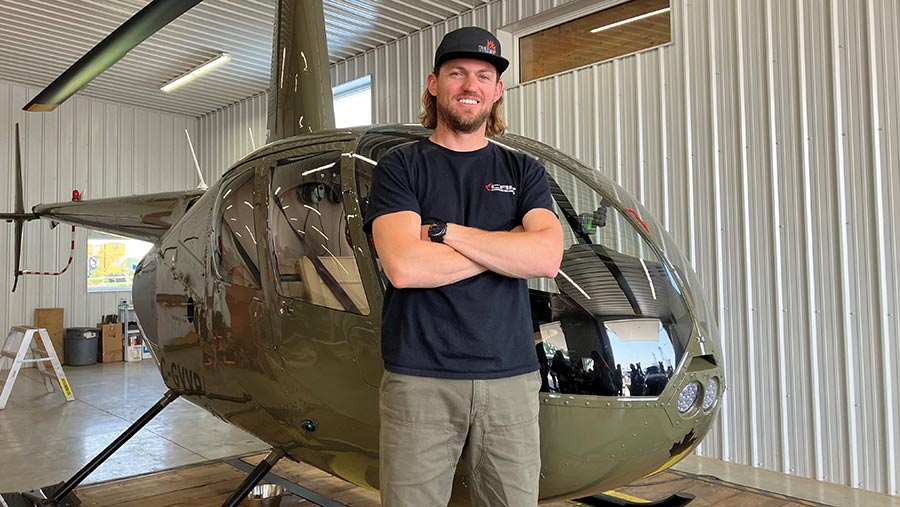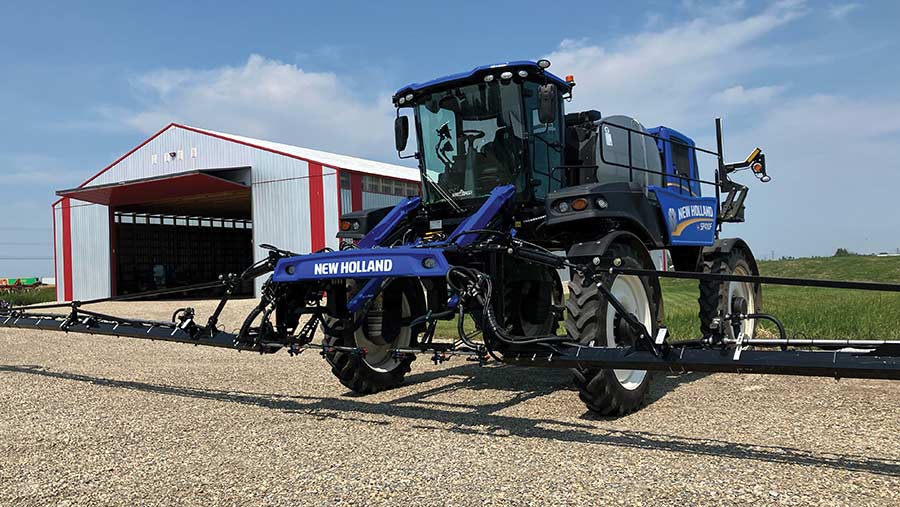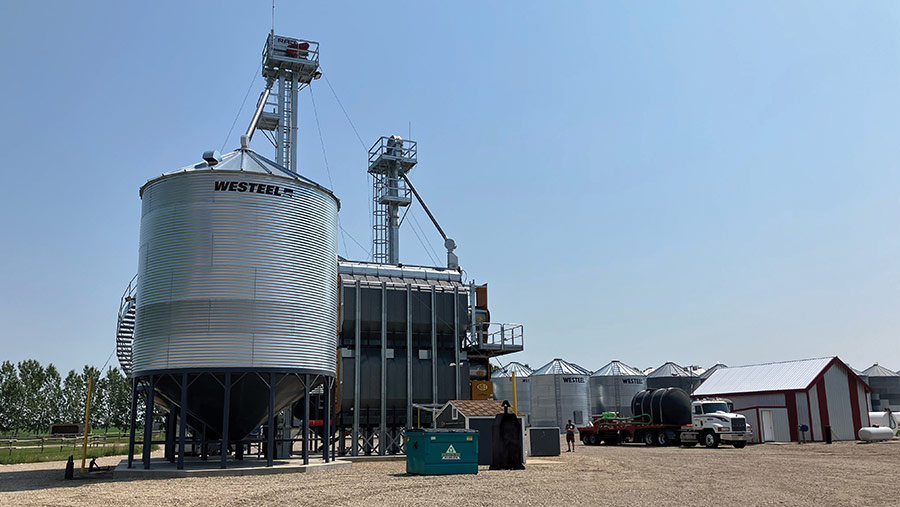Grower improves fungicide use and compaction with helicopter
 Wade McAllister © MAG/Emma Gillbard
Wade McAllister © MAG/Emma Gillbard A helicopter is not the standard piece of farm kit to be stored in a machinery shed, but Canadian grain producer Wade McAllister plans to combine his passion for farming and flying to enhance crop and soil health at the family farm in Alberta.
After obtaining his helicopter licence 19 years ago and working as a commercial pilot, Wade is giving his flying skills a more agricultural purpose by monitoring crops from the air and tailoring agronomy accordingly.
His next step is to use the 18-year-old C-GVVP aircraft for aerial fungicide sprays in order to improve application efficiency and eliminate soil compaction from his self-propelled sprayer.
See also: Seed sales show heavy reliance on limited number of varieties
“Flying is an amazing tool to have on the farm. You see everything in a totally different perspective.
“It is great for checking crops. We can check every single field across the farm in just an hour, which would normally take up to two days,” says Wade.
“You can get low, slow and land in fields to check out what’s going on,” he adds.
Eliminate soil compaction
The McAllister family farm 1,500ha of arable land at Antler Valley Farms in Red Deer County, central Alberta. Crops are usually planted in mid-May and harvested in early September, in a growing season that can be just 90 days long.
Fungicide applications usually take place during June, when ground conditions are wet following significant snow melt and rain showers.
With limited opportunity to apply sprays in wet soil conditions, compaction and wheeling damage from the farm’s self-propelled New Holland sprayer often causes a 3% loss of crop each year.
“Replacing the sprayer with the helicopter will avoid unnecessary crop losses and soil damage. It will save us time, labour and money spent repairing damaged soils.
“Depending on the area we plant, this could save us anywhere between $40,000 and $60,000 (£23,000 and £35,000) a year just by running the helicopter,” says Wade.

The McAllister’s New Holland sprayer © MAG/Emma Gillbard
Helicopter v sprayer
What’s more the helicopter offers faster, more accurate fungicide applications. The current sprayer runs at 13m/hour with a 120ft pass, compared with the helicopter at 70m/hour with a 60ft pass.
“Despite the smaller coverage with the helicopter you are in and out of the field faster, with less travel time” he adds.
Flying just 12ft above the crop, there is no more of a drift risk associated with the helicopter than the sprayer.”
Furthermore, by using the downward force and speed from the helicopter, Wade can achieve greater application accuracy and cut the volume of water used for each application.
“In practice, what would normally be two refills in a field with the sprayer is more like eight with the helicopter, but there is a quick turnaround as you don’t need to return to the yard for refills,” explains Wade.
Unlike the self-propelled sprayer, which runs for three months of the year, the helicopter can be used all year round as a crop monitoring tool.
What’s more, the second-hand 18-year old helicopter cost less to buy than the New Holland sprayer and rather than depreciating at 7% each year, the helicopter appreciates about 5% annually.
There is no need to apply for particular application licence to apply fungicides by air in Canada – as long as it is for agricultural use.
Crop rotation and introducing winter rye

Antler Valley © MAG/Emma Gillbard
Fifth-generation farmers, Wade McAllister and his brother Scott grow 1,500ha of spring cropping, consisting of oilseed rape, wheat, malting barley, peas and maize.
Establishing winter cereals is challenging given winter temperatures reach as low as -30C, with significant snowfall from October to April.
However, two years ago the brothers began growing winter rye as a means of spreading workload and reducing input costs.
“The tricky part is getting the previous crop off before 4 September in order to get the rye to the four- to five-leaf stage before it snows,” says Wade.
“This crop not only spreads workload but it gives the land a complete break from applying chemicals which promotes good soil health.
“Winter rye does not require any herbicides or fungicides due to its vigorous growth traits. As long as it survives the winter we don’t touch it until harvest.”
Average yields at Antler Valley Farm (t/ha) |
|
| Spring barley | 6.7 |
| Spring wheat | 6.4 |
| Spring OSR | 4.0 |
| Spring peas | 5.4 |
| Winter rye | 7.4 |
Plans for slug pellets and glyphosate aerial applications
Aerial application of slug pellets and glyphosate sprays for control of bracken, blackgrass and Japanese knot weed control are nearing UK approval,.
Agricultural drone service company QuadRotor Services and UK drone importer AutoSpray Systems are currently seeking licence approval from the chemical regulations division of the HSE for a number of drone use extensions.
Rob Pearson, chief executive officer of Auto Spray Systems explains that drone legislation is gaining momentum.
“We first imported drones into the UK in 2019 and since then we’ve made incredibly slow progress, but now government is on our side we’re gaining momentum.
“It is no longer a question of whether we will able to make aerial glyphosate applications but more of a question of when and what the buffer zone requirements will be,” he says.
Peter Johnson, co-founder of QuadRotor Services, is hopeful the slug pellet licence will be approved within the next four weeks, with movement on glyphosate spraying by the end of the year.

